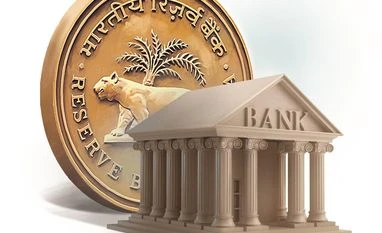The Reserve Bank of India (RBI) has announced an 8 per cent interest rate on the Floating Rate Savings Bond (FRSB) 2034. This is a variable rate bond, and the interest rate will be reset every six months.
Here is what it means:
The Government of India is issuing a special type of bond called a Floating Rate Bond (FRB) that matures in 2034.
Interest rate changes: Unlike regular bonds with a fixed interest rate, this bond's interest rate will adjust every six months.
How the rate is set: The interest rate is based on the average yield of recent auctions for short-term government debt (called Treasury Bills). Basically, it moves with market conditions.
Current rate: For the next six months (from April 30, 2024 to October 29, 2024), the interest rate on this FRB bond will be 8%.
More From This Section
Additional details:
This 8% rate is calculated by taking an average of the interest rates from the previous three auctions of short-term government debt, plus a small additional fixed amount (0.98%).
These FRB bonds can be a good option for investors who want an interest rate that reflects current market conditions.
FRBs have a maturity period of seven years. The minimum investment amount for FRBs is Rs 1,000, while there is no maximum limit. FRBs are backed by the government of India, making it one of the safest investments.
Interest on these bonds is paid semi-annually on January 1 and July 1 each year, with no provision for cumulative interest payments.
Investors buy floating-rate bonds because of their flexibility to reflect the current interest rate of the market. If the interest rate of the benchmark rises, the interest rate payable for the floating rate bond rises too.
Such bonds make sense in a rising rate environment.
" Such bonds are suitable for conservative investors seeking assured returns from a lump-sum investment. Not suitable for investors who can assume some risk by investing in equity-linked investments, which can generate much higher returns. Alternatives can be (i) Balanced mutual funds (for those who can assume risk), (ii) Bank fixed deposits, though the rate of return is lower, and (iii) Company deposits," said Value Research in a note.
Your capital in floating-rate bonds is fully protected. However, there is no inflation protection, which means whenever inflation is above the latest interest rate, the deposit earns no real returns. However, when the inflation is below the current interest rate, it does manage a positive real rate of return.
Moreover, these bonds are not listed and traded and you cannot take loans against them. "You are effectively locked in for a tenure of seven years. However, pre-mature encashment is allowed with a penalty for senior citizens after a minimum lock-in period, which varies from four to six years depending on the age bracket in which the senior citizen falls," noted Value Research.
)